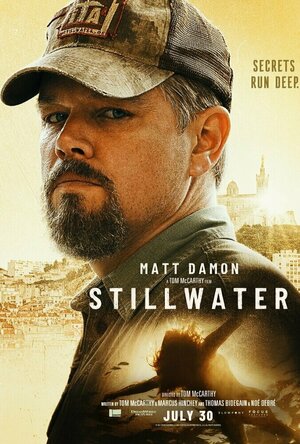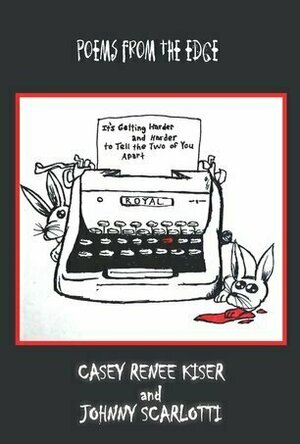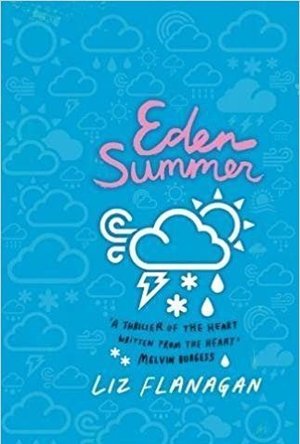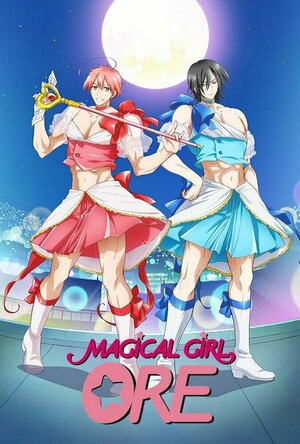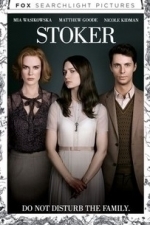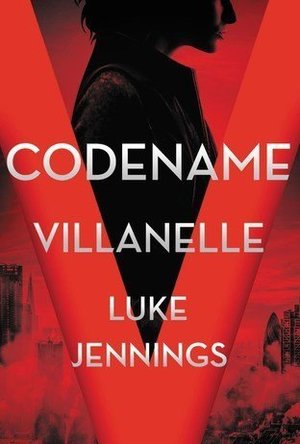Search
Search results
Erika (17789 KP) rated Stillwater (2021) in Movies
Aug 3, 2021
The film Stillwater is based upon and exploits the Amanda Knox story. Swapping Italy for the town of Marseille, France, Allison (Abigail Breslin), an American university student is convicted of killing her girlfriend, Lina. Bill (Matt Damon), Allison’s estranged father, visits her regularly in prison, and is convinced of her innocence.
The majority of the film focuses on Bill’s quest to prove her innocence. Bill is a roughneck (oil driller), good ol’ boy Okie from Stillwater. After delivering a letter to Allison’s lawyer with new information, he takes it upon himself to find the main suspect, Akim, with the help of Virginie (Camille Cottin). This is completely against Allison’s wishes, because she sees him, and herself, as a ‘fuck-up’.
Bill develops a relationship with Virginie, and her daughter, Maya (Lilou Siauvaud). After Allison refuses to see him anymore, Bill stays with Virginie, as a friend, helps with Maya, and goes native. Honestly, the subplot of this relationship with Virginie that progresses to a romantic relationship, and the fatherly relationship to Maya, slow the film down to a snail’s pace. The story finally picks up again, when Bill takes Maya to a football game, and he captures Akim. Bill collects DNA from Akim, hands it to an ex-cop, then finally learns the truth of what happened with the murder of Lina. This situation ruins his relationship with his new French family, and he goes back to Stillwater, quickly followed by Allison, after she is released after the DNA matches what was left at the crime scene.
I was originally pretty excited to see the film, but then I read a Vanity Fair interview with the director, Tom McCarthy. McCarthy mentioned that he wanted to be in the shoes of Amanda Knox, or something like that. Knox, who was found not guilty for the murder of Meredith Kercher, was probably very available. Knox came out after the article was published and voiced that her story was being exploited. Reading her responses made me have really icky feelings, and I almost didn’t go see it, because they’re profiting off her story. To be fair, Knox is profiting off her own story as well, but it still isn’t right. This situation hurt the film, in my opinion, and I think the box office numbers in the US reflect that as well. I would have rated this film higher, and enjoyed it more, had I not seen the press surrounding it. I don’t know whether that’s a good or bad thing.
Damon did well in his portrayal of an Okie roughneck, and you could tell he really did study to nail the role. Breslin was neither here nor there, and I didn’t necessarily sympathize with her at all. So, I didn’t really care in the end if she got out of prison or not.
This film clocks in at 2 hours and 20 minutes, and it felt like a 2 hour and 20-minute film. I didn’t like the subplot, at all. It made the movie so bloated, and I kind of just wanted it to end. I don’t think this film is going to do well outside of the US, at all.
The majority of the film focuses on Bill’s quest to prove her innocence. Bill is a roughneck (oil driller), good ol’ boy Okie from Stillwater. After delivering a letter to Allison’s lawyer with new information, he takes it upon himself to find the main suspect, Akim, with the help of Virginie (Camille Cottin). This is completely against Allison’s wishes, because she sees him, and herself, as a ‘fuck-up’.
Bill develops a relationship with Virginie, and her daughter, Maya (Lilou Siauvaud). After Allison refuses to see him anymore, Bill stays with Virginie, as a friend, helps with Maya, and goes native. Honestly, the subplot of this relationship with Virginie that progresses to a romantic relationship, and the fatherly relationship to Maya, slow the film down to a snail’s pace. The story finally picks up again, when Bill takes Maya to a football game, and he captures Akim. Bill collects DNA from Akim, hands it to an ex-cop, then finally learns the truth of what happened with the murder of Lina. This situation ruins his relationship with his new French family, and he goes back to Stillwater, quickly followed by Allison, after she is released after the DNA matches what was left at the crime scene.
I was originally pretty excited to see the film, but then I read a Vanity Fair interview with the director, Tom McCarthy. McCarthy mentioned that he wanted to be in the shoes of Amanda Knox, or something like that. Knox, who was found not guilty for the murder of Meredith Kercher, was probably very available. Knox came out after the article was published and voiced that her story was being exploited. Reading her responses made me have really icky feelings, and I almost didn’t go see it, because they’re profiting off her story. To be fair, Knox is profiting off her own story as well, but it still isn’t right. This situation hurt the film, in my opinion, and I think the box office numbers in the US reflect that as well. I would have rated this film higher, and enjoyed it more, had I not seen the press surrounding it. I don’t know whether that’s a good or bad thing.
Damon did well in his portrayal of an Okie roughneck, and you could tell he really did study to nail the role. Breslin was neither here nor there, and I didn’t necessarily sympathize with her at all. So, I didn’t really care in the end if she got out of prison or not.
This film clocks in at 2 hours and 20 minutes, and it felt like a 2 hour and 20-minute film. I didn’t like the subplot, at all. It made the movie so bloated, and I kind of just wanted it to end. I don’t think this film is going to do well outside of the US, at all.
<a href="https://amzn.to/2Wi7amb">Wishlist</a>; | <a
<a href="https://diaryofdifference.com/">Blog</a>; | <a href="https://www.facebook.com/diaryofdifference/">Facebook</a>; | <a href="https://twitter.com/DiaryDifference">Twitter</a>; | <a href="https://www.instagram.com/diaryofdifference/">Instagram</a>; | <a href="https://www.pinterest.co.uk/diaryofdifference/pins/">Pinterest</a>;
<img src="https://diaryofdifference.com/wp-content/uploads/2020/09/Book-Review-Banner-79.png"/>;
I don’t always read poetry, but I won "It's Getting Harder and Harder To Tell the Two of You Apart" by Casey Renee Kiser and Johnny Scarlotti through a giveaway on LibraryThing.
And if you are already familiar with my “reading rules”, you know I try and read every single book I have ever received, because it’s only fair. And sometimes, the most unexpected books and the ones we don’t actively search for tend to surprise us the most. That happened with this book as well!
"It's Getting Harder and Harder To Tell the Two of You Apart" is written by two authors - two amazing writers of poetry, who have a very similar style of horror and suspense, but also very distinctive differences in their writing style too. The book is split in two parts, and we get the chance to explore both worlds.
<b>Part 1 - Casey Renee Kiser</b>
The first part of the book was written by Casey Renee Kiser, and my favorite poem was “I am not a ghost yet”. It is morbid and powerful, and I loved the way the feelings and scenes were amplified in a morbid sense. I love the brutality of the writing.
<b><i>“Everything was beautiful the day you died”,
You said as you touched my cold hand. </i></b>
<b>Part 2 - Johnny Scarlotti</b>
I could instantly see the difference in the poems between the two poets, but at the same time, also admire how similar their styles and themes are. I find Johnny’s writing very creepy, much creepier than Casey’s. Especially when the mood suddenly changes and the random “haha’s” and “woahh’s” in the poems appear.
<b><i>Now I’m dashing through the park clipping
Children’s kite strings
Ha ha, that’s what you get, you little freaks!</i></b>
It felt like I was reading the secret diary of the Joker. Either him, or Pennywise. It was so fucked up, but it read as the new normal, which is what a psycho would think and feel. It was creepy, it was wrong, but at the same time it satisfied my curiosity. I think that may be the same curiosity that makes me watch true crime shows, crime confessions and old interview with Ted Bundy. And I really enjoyed it.
If I could change anything about my experience with this book, I would have read this for Halloween. I think it would have been the perfect experience, next to a lot of red candles and dim lighting, alongside some quiet creepy music.
I would recommend "It's Getting Harder and Harder To Tell the Two of You Apart" to all fans of horror poetry - it is dark and twisty, brutally honest and creepy, and it will pull you over to the dark side, even for a day.
<a href="https://diaryofdifference.com/">Blog</a>; | <a href="https://www.facebook.com/diaryofdifference/">Facebook</a>; | <a href="https://twitter.com/DiaryDifference">Twitter</a>; | <a href="https://www.instagram.com/diaryofdifference/">Instagram</a>; | <a href="https://www.pinterest.co.uk/diaryofdifference/pins/">Pinterest</a>;
<img src="https://diaryofdifference.com/wp-content/uploads/2020/09/Book-Review-Banner-79.png"/>;
I don’t always read poetry, but I won "It's Getting Harder and Harder To Tell the Two of You Apart" by Casey Renee Kiser and Johnny Scarlotti through a giveaway on LibraryThing.
And if you are already familiar with my “reading rules”, you know I try and read every single book I have ever received, because it’s only fair. And sometimes, the most unexpected books and the ones we don’t actively search for tend to surprise us the most. That happened with this book as well!
"It's Getting Harder and Harder To Tell the Two of You Apart" is written by two authors - two amazing writers of poetry, who have a very similar style of horror and suspense, but also very distinctive differences in their writing style too. The book is split in two parts, and we get the chance to explore both worlds.
<b>Part 1 - Casey Renee Kiser</b>
The first part of the book was written by Casey Renee Kiser, and my favorite poem was “I am not a ghost yet”. It is morbid and powerful, and I loved the way the feelings and scenes were amplified in a morbid sense. I love the brutality of the writing.
<b><i>“Everything was beautiful the day you died”,
You said as you touched my cold hand. </i></b>
<b>Part 2 - Johnny Scarlotti</b>
I could instantly see the difference in the poems between the two poets, but at the same time, also admire how similar their styles and themes are. I find Johnny’s writing very creepy, much creepier than Casey’s. Especially when the mood suddenly changes and the random “haha’s” and “woahh’s” in the poems appear.
<b><i>Now I’m dashing through the park clipping
Children’s kite strings
Ha ha, that’s what you get, you little freaks!</i></b>
It felt like I was reading the secret diary of the Joker. Either him, or Pennywise. It was so fucked up, but it read as the new normal, which is what a psycho would think and feel. It was creepy, it was wrong, but at the same time it satisfied my curiosity. I think that may be the same curiosity that makes me watch true crime shows, crime confessions and old interview with Ted Bundy. And I really enjoyed it.
If I could change anything about my experience with this book, I would have read this for Halloween. I think it would have been the perfect experience, next to a lot of red candles and dim lighting, alongside some quiet creepy music.
I would recommend "It's Getting Harder and Harder To Tell the Two of You Apart" to all fans of horror poetry - it is dark and twisty, brutally honest and creepy, and it will pull you over to the dark side, even for a day.
Eleanor Luhar (47 KP) rated Eden Summer in Books
Jun 24, 2019
I keep falling behind on wiring my reviews, sorry! I really need to get back on track. I finished this on Tuesday I think? I really enjoyed it, although it isn't quite worthy of five stars.
I'm going to put in a trigger warning as there are mentions of substance abuse, physical abuse, death, adoption and suicide.
Jess's best friend has gone missing. Through interviews with the police and Jess's personal recollections, we begin to build up a picture of Eden's life before her disappearance. Her sister had recently been killed in a car accident, and her seemingly perfect relationship with Liam was more complicated than anyone realised. Bit by bit, Jess - and we - begin to piece things together and discover where Eden has gone.
The girls are only young - 15 I think? - and very much have the all-consuming passion that young teens feel. As in, every little issue feels huge, and things feel far more serious than they might to an older person. I remember feeling this way. I think it was portrayed so accurately, the way fighting with your best friend feels like the end of the world and a family argument overwhelms you with guilt. It was a bit annoying in some ways, though; no fault of the author, of course, I just get a bit annoyed at kids taking things too seriously. I look back at myself and think how stupid it was to get so caught up in such little issues. So the things that Jess gets so worked up over just seemed a bit trivial to me, like she was exaggerating too much. But as I said, this creates the teenage voice really well in my opinion.
The things that both these girls have gone through are massive, though - Jess was attacked and Eden's sister killed. That's pretty hard for a young girl to deal with, and these are not the problems I'm saying are trivial. These are hugely important and emotional issues and I think it's great to talk about. I love books with these real, albeit sad, events. I think it is so good to discuss all the feelings and situations that follow, and also emphasise how it is not the end of the world if something bad happens. life will continue. Eden says how she feels her sister's death becoming more distant, more bearable, and how she doesn't want that to happen. She feels guilty, as if she's forgetting her and moving on. This is so important. She also thinks about killing herself due to guilt - which I won't ruin too much - but then realises how she shouldn't take life for granted. Her sister would've given anything to be alive still, and she shouldn't be throwing that away.
It was a really good read and I found myself wondering what was going to be revealed next. It was wel written and perfectly captured the young voice of Jess. If I read this when I was younger, I think I would've adored it. I would've understood it and connected to Jess more than I did now I'm older. 4 stars, definitely worth a read.
I'm going to put in a trigger warning as there are mentions of substance abuse, physical abuse, death, adoption and suicide.
Jess's best friend has gone missing. Through interviews with the police and Jess's personal recollections, we begin to build up a picture of Eden's life before her disappearance. Her sister had recently been killed in a car accident, and her seemingly perfect relationship with Liam was more complicated than anyone realised. Bit by bit, Jess - and we - begin to piece things together and discover where Eden has gone.
The girls are only young - 15 I think? - and very much have the all-consuming passion that young teens feel. As in, every little issue feels huge, and things feel far more serious than they might to an older person. I remember feeling this way. I think it was portrayed so accurately, the way fighting with your best friend feels like the end of the world and a family argument overwhelms you with guilt. It was a bit annoying in some ways, though; no fault of the author, of course, I just get a bit annoyed at kids taking things too seriously. I look back at myself and think how stupid it was to get so caught up in such little issues. So the things that Jess gets so worked up over just seemed a bit trivial to me, like she was exaggerating too much. But as I said, this creates the teenage voice really well in my opinion.
The things that both these girls have gone through are massive, though - Jess was attacked and Eden's sister killed. That's pretty hard for a young girl to deal with, and these are not the problems I'm saying are trivial. These are hugely important and emotional issues and I think it's great to talk about. I love books with these real, albeit sad, events. I think it is so good to discuss all the feelings and situations that follow, and also emphasise how it is not the end of the world if something bad happens. life will continue. Eden says how she feels her sister's death becoming more distant, more bearable, and how she doesn't want that to happen. She feels guilty, as if she's forgetting her and moving on. This is so important. She also thinks about killing herself due to guilt - which I won't ruin too much - but then realises how she shouldn't take life for granted. Her sister would've given anything to be alive still, and she shouldn't be throwing that away.
It was a really good read and I found myself wondering what was going to be revealed next. It was wel written and perfectly captured the young voice of Jess. If I read this when I was younger, I think I would've adored it. I would've understood it and connected to Jess more than I did now I'm older. 4 stars, definitely worth a read.
Bong Mines Entertainment (15 KP) rated Taped - Single by Naaz in Music
Jul 10, 2019
Naaz is a 21-year old Kurdish singer-songwriter based in The Netherlands. Not too long ago, she released a lovely music video for her “Taped” single.
“Sometimes, people will hear your pain but not actually listen. It’s like their ears are taped to whatever they don’t want to hear. I told my friend about my never-ending nightmares that sometimes can feel so real that they’ve been altering the way I see the world. His reply was that he wouldn’t want to have my mind. So I wrote a song about it.” – Naaz
‘Taped’ tells an interesting tale of a young woman who tends to overshare what she thinks to people close to her.
But she feels awkward the moment she stops talking, not understanding why she thinks the way she thinks. Therefore, she shuts her thoughts up and feels less human whenever someone doesn’t appreciate her mind.
What she really wants is for people to relate to what she has to say, and for them to not feel alienated by her thoughts.
‘Taped’ contains a relatable storyline, ear-welcoming vocals, and groovy instrumentation created by Naaz & Soulsearchin’.
“When I was 15-years-old, I had taught myself to stop speaking as it often brought me in trouble. I’ve always had such strong opinions that it ended up in me being bullied for years. Once I turned 18, I had to start socializing again as I was putting out music. I felt like my mind, ears, and mouth were TAPED shut for years. Therefore, I became an extremely open person just to make up for all the years before where I mistreated myself with my mindset. I realized my way of thinking was not too realistic, not everyone will leave me when I cry because everybody cries. I hope this song inspires you to be open and dare to scream out your feelings. Seriously, it will change everything. Allow yourself to be inspired by the struggle. Don’t let yourself be TAPED.” – Naaz
Naaz feels that honesty online could be the therapy that we all need, along with helping a few others along the way. Therefore, she practices what she preaches.
“This is the artwork. You see 3 generations of Naaz. This portrays the evolution of me, my music, and my life. A new era. Old and young Naaz is taping their eyes shut to what they don’t want to see. But I decide to confront myself and open up. I will no longer be TAPED.” – Naaz
Making music to Naaz is like having conversations with herself and others. She unfolds this in every song she’s ever written and communicated with her fanbase.
Not too long ago, her career skyrocketed shortly after releasing her debut EP, entitled, “Bits of Naaz”.
Since then, the bubbly pop star has won two Dutch Grammies (Edisons) and was nominated for Best Act at MTV’s EMAs. Also, she supported Arcade Fire, Jessie J, and Hayley Kiyoko.
Naaz will play across Europe towards the end of the year before ending in Amsterdam.
“Sometimes, people will hear your pain but not actually listen. It’s like their ears are taped to whatever they don’t want to hear. I told my friend about my never-ending nightmares that sometimes can feel so real that they’ve been altering the way I see the world. His reply was that he wouldn’t want to have my mind. So I wrote a song about it.” – Naaz
‘Taped’ tells an interesting tale of a young woman who tends to overshare what she thinks to people close to her.
But she feels awkward the moment she stops talking, not understanding why she thinks the way she thinks. Therefore, she shuts her thoughts up and feels less human whenever someone doesn’t appreciate her mind.
What she really wants is for people to relate to what she has to say, and for them to not feel alienated by her thoughts.
‘Taped’ contains a relatable storyline, ear-welcoming vocals, and groovy instrumentation created by Naaz & Soulsearchin’.
“When I was 15-years-old, I had taught myself to stop speaking as it often brought me in trouble. I’ve always had such strong opinions that it ended up in me being bullied for years. Once I turned 18, I had to start socializing again as I was putting out music. I felt like my mind, ears, and mouth were TAPED shut for years. Therefore, I became an extremely open person just to make up for all the years before where I mistreated myself with my mindset. I realized my way of thinking was not too realistic, not everyone will leave me when I cry because everybody cries. I hope this song inspires you to be open and dare to scream out your feelings. Seriously, it will change everything. Allow yourself to be inspired by the struggle. Don’t let yourself be TAPED.” – Naaz
Naaz feels that honesty online could be the therapy that we all need, along with helping a few others along the way. Therefore, she practices what she preaches.
“This is the artwork. You see 3 generations of Naaz. This portrays the evolution of me, my music, and my life. A new era. Old and young Naaz is taping their eyes shut to what they don’t want to see. But I decide to confront myself and open up. I will no longer be TAPED.” – Naaz
Making music to Naaz is like having conversations with herself and others. She unfolds this in every song she’s ever written and communicated with her fanbase.
Not too long ago, her career skyrocketed shortly after releasing her debut EP, entitled, “Bits of Naaz”.
Since then, the bubbly pop star has won two Dutch Grammies (Edisons) and was nominated for Best Act at MTV’s EMAs. Also, she supported Arcade Fire, Jessie J, and Hayley Kiyoko.
Naaz will play across Europe towards the end of the year before ending in Amsterdam.
Jesters_folly (230 KP) rated Magical Girl Ore in TV
Sep 30, 2019
Contains spoilers, click to show
Saki and Sakuyo want to be an Idol duo but when Sakuyo’s brother, Mohiro gets into trouble Saki find that the power of love (and a hand from a fairy) can transform her in to a magic girl with a difference. Now she must juggle working towards her dreams with protecting Mohiro and the world from rampaging demons
Magic Girl Ore is a subversive parody of the normal ‘Magic Girl’ series’, it takes the tropes of series’ like ‘Sailor Moon’ and turns them on their head and it is these subversions that make the show. The story line is, to be honest a bit bland, in most episodes the girls are doing some kind of Idol related activity then the demons turn up and try to kidnap Mohiro, who is always around often for convoluted reason, then the girls change and save the day. Each demon attack seems to get worst, building up to the final plan. It takes a few episode to realise that the formulaic, almost dull nature of the show is deliberate, until the end the action is not really important because what you are watching is a subversion of a genre. If you take any number of shows you can see the same plot, ‘Sailor Moon’, ‘Miraculous’, ‘Power Rangers’ and even ‘Scooby Doo’ all have the same plot, a ‘big Bad’ is trying to take over the world/amusement park and the heroes have to stop them.
There are any number of ‘Magic girl’ series’, the genre started in Japan but soon became popular all over the world with many countries creating their own spin on the idea. Most of the time the main character is a young girl who is given the power to transform into their Magic form to fight evil. This is still the standard plot for ‘Magic Girl Ore’ however; the fairy is a normal looking business man, the transformation changes the school girl into a 20 something muscular man, still in the tradition magic girl dress and the demons are cute and buff, there is a hunky possibly gay feel to the demons. This bring us to the transformations, the magic girls change by concentrating on saving the person they love, with Saki this follows a common theme, the school girl in love with her best friend’s brother, the brother doesn’t know. Then Sakuyo get the power but the person she loves is Saki. It’s also hinted that Mohiro prefers Saki in her male form. There are two other magic girls, Michiru, who’s love is male Saki but she hides her feelings so much that her transformations take more energy and ages her and her partner, Ruka who’s love is Michiru.
‘Magic Girl Ore’ could have easily fallen into concentrating on these relationships turning the series into a LGB.. statement but it doesn’t, girls like girls or magic girl men or men who like men but it’s just treated as the way it is and, I think that is the right way to do it.
Over all ‘Magic Girl Ore’ is a lot of fun but does seem to drag occasionally.
Magic Girl Ore is a subversive parody of the normal ‘Magic Girl’ series’, it takes the tropes of series’ like ‘Sailor Moon’ and turns them on their head and it is these subversions that make the show. The story line is, to be honest a bit bland, in most episodes the girls are doing some kind of Idol related activity then the demons turn up and try to kidnap Mohiro, who is always around often for convoluted reason, then the girls change and save the day. Each demon attack seems to get worst, building up to the final plan. It takes a few episode to realise that the formulaic, almost dull nature of the show is deliberate, until the end the action is not really important because what you are watching is a subversion of a genre. If you take any number of shows you can see the same plot, ‘Sailor Moon’, ‘Miraculous’, ‘Power Rangers’ and even ‘Scooby Doo’ all have the same plot, a ‘big Bad’ is trying to take over the world/amusement park and the heroes have to stop them.
There are any number of ‘Magic girl’ series’, the genre started in Japan but soon became popular all over the world with many countries creating their own spin on the idea. Most of the time the main character is a young girl who is given the power to transform into their Magic form to fight evil. This is still the standard plot for ‘Magic Girl Ore’ however; the fairy is a normal looking business man, the transformation changes the school girl into a 20 something muscular man, still in the tradition magic girl dress and the demons are cute and buff, there is a hunky possibly gay feel to the demons. This bring us to the transformations, the magic girls change by concentrating on saving the person they love, with Saki this follows a common theme, the school girl in love with her best friend’s brother, the brother doesn’t know. Then Sakuyo get the power but the person she loves is Saki. It’s also hinted that Mohiro prefers Saki in her male form. There are two other magic girls, Michiru, who’s love is male Saki but she hides her feelings so much that her transformations take more energy and ages her and her partner, Ruka who’s love is Michiru.
‘Magic Girl Ore’ could have easily fallen into concentrating on these relationships turning the series into a LGB.. statement but it doesn’t, girls like girls or magic girl men or men who like men but it’s just treated as the way it is and, I think that is the right way to do it.
Over all ‘Magic Girl Ore’ is a lot of fun but does seem to drag occasionally.
Andy K (10823 KP) rated Stoker (2013) in Movies
Oct 5, 2019
Chan-wook Park, the director of Oldboy and Thirst brings audiences his unique visual style and unsettling themes in his first English speaking film.
After the death of the family's patriarch, his surviving wife and teenage daughter handle the grief in very different ways. Wife Evelyn cries at the funeral, then doesn't seem to be too morose after the appearance of her former brother-in-law, Charles. Daughter India thinks about times her and her father had together when she was a child. They seemed to have much more of a bond in hanging with one another hunting small game. Evelyn seems jealous of their relationship until brother Charlie arrives in her gazes full time.
Charlie just seems a bit to nice and proper and trying to fit in with his new female friends. Something not quite right about him. This is also noticed by the family's live in housekeeper and an aunt that drops by the house sometime after the funeral. Mysteriously, both women go missing sometime after.
India has her own issues at school dealing herself with bullies and an aggressive boy who tries to rape her. She deals with them herself, and with help from others. She seems very pleased with herself and remembers fondly what she has done.
Events then become very disturbing, family members start to show their true feelings for each and motives are explained and revealed for a memorable and unique third act.
Director Park's visual style of interesting camera angles, memorable images and close up photography here as well; however, muted compared to his usual over-the-top style of his Asian films. Disturbing images followed by exterior shots or interesting camera transitional moments are one I love to see if film and there are several of them in this piece.
The unraveling of the mystery and of the character motivations and the continually changing family dynamic are certainly the most interesting aspect of the story. Not sure if I completely understand some of the subtle thematic elements or how they relate to the overall message the film is trying to convey, but that is not a negative.
The ending is shocking and unexpected and not sure if I understand that either, but it ties the story up and makes the audience wonder what will happen to the characters after the credits roll.
Mia Wasikowska stood out to me as very good in this film. Her nuanced and emotional roller coaster of a character was done with conviction. You may remember her from the Alice in Wonderland Tim Burton reboots; however, she is much more wicked this time around.
Not sure if everyone would enjoy as it may seem boring or confusing to some. I did read several 1 and 3 star reviews along with many 9 and 10 star reviews which seem to be the type of movie I am watching lately. Those types of movies are divisive and I like to see which side I am on.
Watch for yourself and tell me what you think.
After the death of the family's patriarch, his surviving wife and teenage daughter handle the grief in very different ways. Wife Evelyn cries at the funeral, then doesn't seem to be too morose after the appearance of her former brother-in-law, Charles. Daughter India thinks about times her and her father had together when she was a child. They seemed to have much more of a bond in hanging with one another hunting small game. Evelyn seems jealous of their relationship until brother Charlie arrives in her gazes full time.
Charlie just seems a bit to nice and proper and trying to fit in with his new female friends. Something not quite right about him. This is also noticed by the family's live in housekeeper and an aunt that drops by the house sometime after the funeral. Mysteriously, both women go missing sometime after.
India has her own issues at school dealing herself with bullies and an aggressive boy who tries to rape her. She deals with them herself, and with help from others. She seems very pleased with herself and remembers fondly what she has done.
Events then become very disturbing, family members start to show their true feelings for each and motives are explained and revealed for a memorable and unique third act.
Director Park's visual style of interesting camera angles, memorable images and close up photography here as well; however, muted compared to his usual over-the-top style of his Asian films. Disturbing images followed by exterior shots or interesting camera transitional moments are one I love to see if film and there are several of them in this piece.
The unraveling of the mystery and of the character motivations and the continually changing family dynamic are certainly the most interesting aspect of the story. Not sure if I completely understand some of the subtle thematic elements or how they relate to the overall message the film is trying to convey, but that is not a negative.
The ending is shocking and unexpected and not sure if I understand that either, but it ties the story up and makes the audience wonder what will happen to the characters after the credits roll.
Mia Wasikowska stood out to me as very good in this film. Her nuanced and emotional roller coaster of a character was done with conviction. You may remember her from the Alice in Wonderland Tim Burton reboots; however, she is much more wicked this time around.
Not sure if everyone would enjoy as it may seem boring or confusing to some. I did read several 1 and 3 star reviews along with many 9 and 10 star reviews which seem to be the type of movie I am watching lately. Those types of movies are divisive and I like to see which side I am on.
Watch for yourself and tell me what you think.
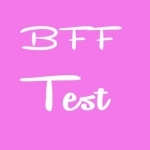
BFF Friendship Test - Friendship test Quiz
Lifestyle and Education
App
The ultimate Best Friends Forever tester. Answer ten questions and our unique algorithm with...
Ivana A. | Diary of Difference (1171 KP) rated Codename Villanelle (Killing Eve #1) in Books
Aug 3, 2020
<a href="https://amzn.to/2Wi7amb">Wishlist</a>; | <a
<a href="https://diaryofdifference.com/">Blog</a>; | <a href="https://www.facebook.com/diaryofdifference/">Facebook</a>; | <a href="https://twitter.com/DiaryDifference">Twitter</a>; | <a href="https://www.instagram.com/diaryofdifference/">Instagram</a>; | <a href="https://www.pinterest.co.uk/diaryofdifference/pins/">Pinterest</a>;
#1 <a href="https://www.goodreads.com/review/show/3346735674">Codename Villanelle</a> - ★★★
#2 <a href="https://www.goodreads.com/review/show/3350743338">No Tomorrow</a> - To Be Read
<img src="https://diaryofdifference.com/wp-content/uploads/2020/06/Book-Review-Banner-62.png"/>;
<b><i>Codename Villanelle is a book I listened to. I don’t often listen to audiobooks, but I wanted to read this book, and I didn’t own a physical copy.</i></b>
The reason I wanted to read this book is because I heard there is a TV series coming, featuring Sandra Oh from Grey’s Anatomy. I loved Sandra as Christina, and I knew I was going to love her as Eve. The TV Series is a hit, and I love it, but this is not why we’re here. We are here to talk about the books. On this occasion, the first book in the series.
<b><i>Villanelle is one of the world’s best assassins.</i></b>
She is a psychopath who loves her luxurious lifestyle and loves playing mind games. She is hired by a powerful group called the Twelve, and she is tasked to murder rich and influential people.
<b><i>Eve Polastri is a former MI6 operative.</i></b>
She is hired to find and capture or kill this assassin. Eve, who has a quiet life with her husband Nico and enjoys the peace, accepts the mission. However, little does she know, everything is about to change.
The chase is an exciting one and we never know what will happen next.
Honestly, I had troubles with the audiobook. The pronunciation of everything in Russian, French and Italian was a complete miss, and it annoyed me. Names, food, places, cities - it was all said incorrectly. I know for some people this is a minor issue. However, for me, it took away the joy throughout the whole book.
Apart from this, the first book of the series is a great introduction to both Eve and Villanelle. We find out more about their personalities and characters. We follow Villanelle in a few of her assassinations, and we follow Eve in some of her investigations. I think this book focused more on VIllanelle, featuring her childhood and training days as well. The presentation of their feelings and insights was immaculate. I loved their relationship forming, even without them meeting each other. There is tension, there are clues, and there is the play of destiny to always end up chasing each other.
<b><i>The writing was good and the pace was fast, which led to a very fast adventure. Also, the ending was intriguing, and it definitely leaves space for the second book to come in and explain a few things.</i></b>
I am looking forward to continuing this series and reading the second book - No Tomorrow. I recommend Codename Villanelle to everyone that loves action, assassination, murder, spy themes and psychological thrillers.
<a href="https://diaryofdifference.com/">Blog</a>; | <a href="https://www.facebook.com/diaryofdifference/">Facebook</a>; | <a href="https://twitter.com/DiaryDifference">Twitter</a>; | <a href="https://www.instagram.com/diaryofdifference/">Instagram</a>; | <a href="https://www.pinterest.co.uk/diaryofdifference/pins/">Pinterest</a>;
#1 <a href="https://www.goodreads.com/review/show/3346735674">Codename Villanelle</a> - ★★★
#2 <a href="https://www.goodreads.com/review/show/3350743338">No Tomorrow</a> - To Be Read
<img src="https://diaryofdifference.com/wp-content/uploads/2020/06/Book-Review-Banner-62.png"/>;
<b><i>Codename Villanelle is a book I listened to. I don’t often listen to audiobooks, but I wanted to read this book, and I didn’t own a physical copy.</i></b>
The reason I wanted to read this book is because I heard there is a TV series coming, featuring Sandra Oh from Grey’s Anatomy. I loved Sandra as Christina, and I knew I was going to love her as Eve. The TV Series is a hit, and I love it, but this is not why we’re here. We are here to talk about the books. On this occasion, the first book in the series.
<b><i>Villanelle is one of the world’s best assassins.</i></b>
She is a psychopath who loves her luxurious lifestyle and loves playing mind games. She is hired by a powerful group called the Twelve, and she is tasked to murder rich and influential people.
<b><i>Eve Polastri is a former MI6 operative.</i></b>
She is hired to find and capture or kill this assassin. Eve, who has a quiet life with her husband Nico and enjoys the peace, accepts the mission. However, little does she know, everything is about to change.
The chase is an exciting one and we never know what will happen next.
Honestly, I had troubles with the audiobook. The pronunciation of everything in Russian, French and Italian was a complete miss, and it annoyed me. Names, food, places, cities - it was all said incorrectly. I know for some people this is a minor issue. However, for me, it took away the joy throughout the whole book.
Apart from this, the first book of the series is a great introduction to both Eve and Villanelle. We find out more about their personalities and characters. We follow Villanelle in a few of her assassinations, and we follow Eve in some of her investigations. I think this book focused more on VIllanelle, featuring her childhood and training days as well. The presentation of their feelings and insights was immaculate. I loved their relationship forming, even without them meeting each other. There is tension, there are clues, and there is the play of destiny to always end up chasing each other.
<b><i>The writing was good and the pace was fast, which led to a very fast adventure. Also, the ending was intriguing, and it definitely leaves space for the second book to come in and explain a few things.</i></b>
I am looking forward to continuing this series and reading the second book - No Tomorrow. I recommend Codename Villanelle to everyone that loves action, assassination, murder, spy themes and psychological thrillers.
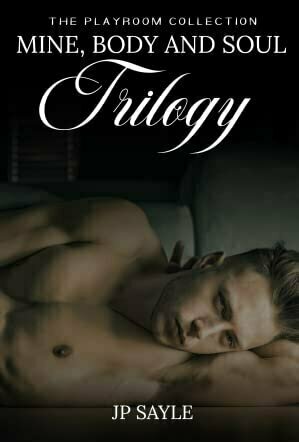
Mine, Body and Soul: Trilogy (The Playroom #1-3)
Book
Part One Was it possible that there was a man out there who could see past Lenny’s damaged body...
Contemporary MM Romance BDSM

Call of Combat: Ultimate Shooting Game
Games and Entertainment
App
No.1 Shooting game with Aliens has Arrived Be the last witness of dying city. Become the first hope...
